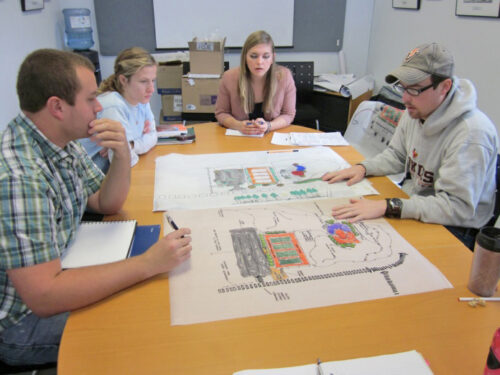 As urbanized areas of the state grow, trees are an essential component of vibrant communities, providing balance to the built environment and improving the quality of life for residents and visitors.
As urbanized areas of the state grow, trees are an essential component of vibrant communities, providing balance to the built environment and improving the quality of life for residents and visitors.
Planning for a Growing Population
Virginia’s landscape is transforming at a rapid rate to accommodate our burgeoning population. This growth is increasing urbanization and development across Virginia, negatively affecting forestland. Urban sprawl fragments forests and negatively impacts the ecological health and aesthetic quality of Virginia’s communities.
Rapid urbanization in Hampton Roads, Northern Virginia, and Central Virginia has resulted in a substantial conversion of rural forestland to other developed uses. Urban sprawl has not only contributed to costly transportation problems in Northern Virginia and Hampton Roads, it has resulted in changing land-use patterns, increasing fragmentation, and changes in land-use values that have threatened traditional forestry practices that were once vibrant in this area.
Virginia’s growing population also negatively affects already urbanized areas. Development pressures, such as housing, roads, and utility expansions, contribute to continued fragmentation and forest canopy loss. With canopy loss comes reduced urban ecosystem functions, such as higher summer temperatures, poorer air quality, and the reduced natural systems for stormwater management, also occur.
Poor models for land development result in degraded forest ecosystems that cannot provide long-term benefits. Adequate amounts of open green space need to be conserved, managed, and protected in communities.
What We Can Do
To maximize the economic, social, and environmental benefits of community forests, cities need to be planned with natural systems as a core infrastructure feature, instead of an afterthought. Urban and community forestry systems are an integral component at all system levels: neighborhood, local, community, regional, and watershed. Integrating natural systems and community forests into all scales of city, regional, and state planning efforts – as well as other city systems, such as transportation, housing, and infrastructure – will maximize effectiveness and benefits.
The Urban and Community Forestry program may have financial assistance to help with planning for urban and community forests.
Additional Resources
- Learn more community tree ordinances by reading samples available in the Virginia Tree Ordinance Database (VTOD).
- Learn more about green infrastructures plans at the Green Infrastructure Center.
- Understand the relationship between trees and communities through the Vibrant Cities Lab.
- Learn more about the 10-year Urban Forest Action Plan.
- Understand, expand and maintain your tree canopy through the Chesapeake Tree Canopy Network.
Contact Us
For more information or questions, e-mail us or use our contact form.

